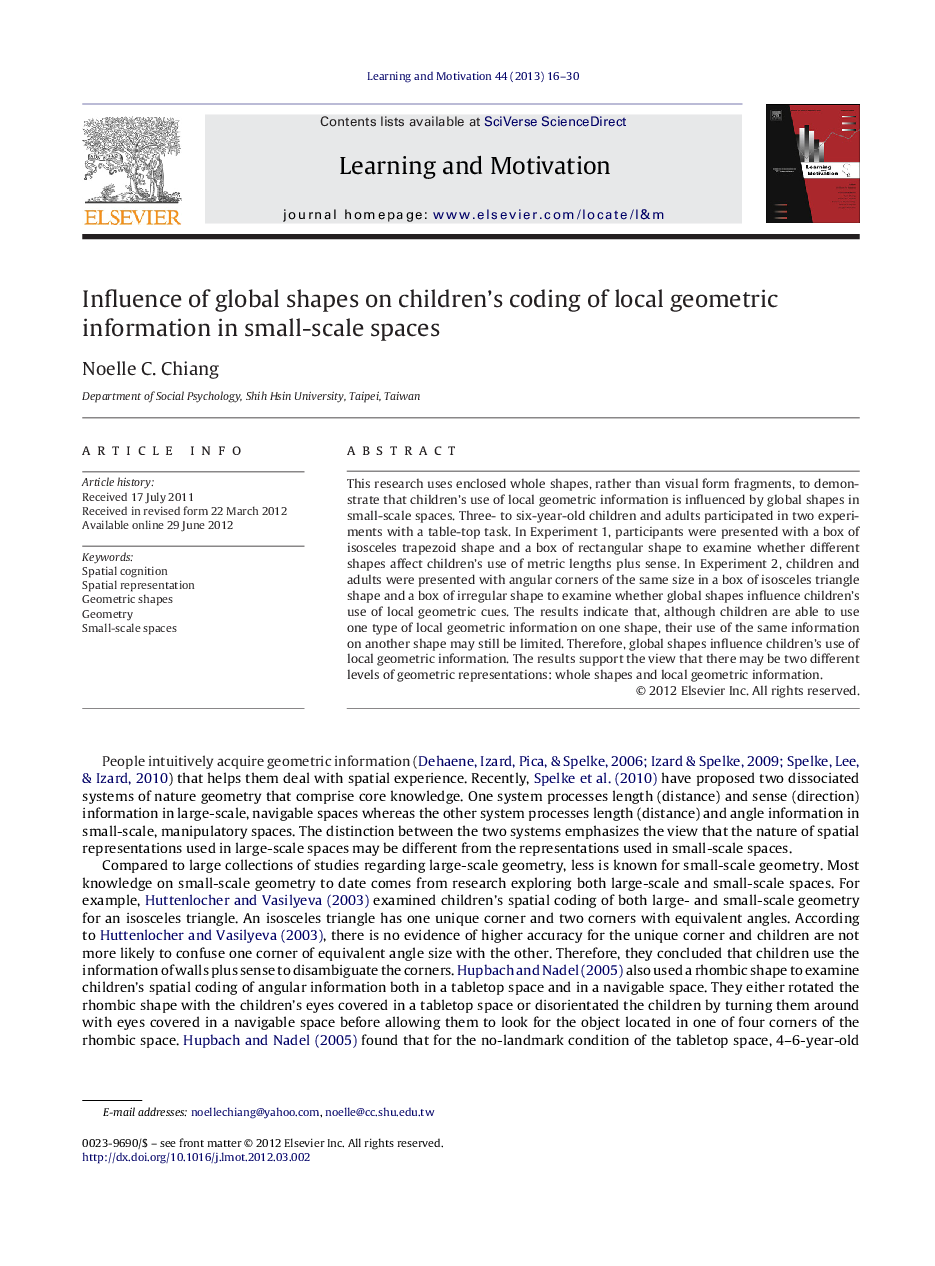| کد مقاله | کد نشریه | سال انتشار | مقاله انگلیسی | نسخه تمام متن |
|---|---|---|---|---|
| 918925 | 919856 | 2013 | 15 صفحه PDF | دانلود رایگان |

This research uses enclosed whole shapes, rather than visual form fragments, to demonstrate that children's use of local geometric information is influenced by global shapes in small-scale spaces. Three- to six-year-old children and adults participated in two experiments with a table-top task. In Experiment 1, participants were presented with a box of isosceles trapezoid shape and a box of rectangular shape to examine whether different shapes affect children's use of metric lengths plus sense. In Experiment 2, children and adults were presented with angular corners of the same size in a box of isosceles triangle shape and a box of irregular shape to examine whether global shapes influence children's use of local geometric cues. The results indicate that, although children are able to use one type of local geometric information on one shape, their use of the same information on another shape may still be limited. Therefore, global shapes influence children's use of local geometric information. The results support the view that there may be two different levels of geometric representations: whole shapes and local geometric information.
Journal: Learning and Motivation - Volume 44, Issue 1, February 2013, Pages 16–30